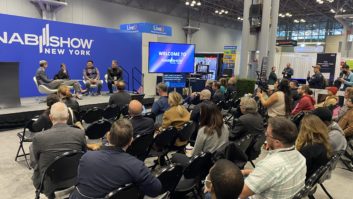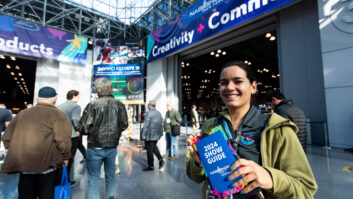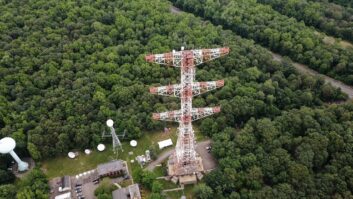A session titled “Tower Site Safety” will explore how broadcast companies can create a safe and productive environment for tower technicians. Held during the NAB Show’s Broadcast Engineering and IT Conference, its attendees can expect to learn how to prevent accidents and protect workers.
James Leifer, director of broadcast operations and engineering at American Tower Corp., will lead the session alongside Clark Lindstrom, the company’s director of safety programs.
According to its website, founded in 1995, American Tower is one of the largest global real estate investment trusts and an independent owner, operator and developer of communications real estate. Its U.S. portfolio includes nearly 42,000 towers.
The session will cover a range of topics including general safety requirements, such as wearing personal protective equipment and displaying proper safety signage, to emergency procedure guidance in instances of tower collapse and personnel injury on-site.
A 2023 safety survey from Tower Climbers United, part of Communications Workers of America, reported that more than 65% of wireless tower technicians have been on a job site where someone has been injured and 4% where someone has been killed.
Organizers said tower safety sessions are meant to encourage feedback between employers and tower technicians and create a safer environment for all, whether the tower serves broadcast, telecom or other applications.
Broadcast tower climbers and technicians, however, tend to be at increased risk due to taller tower heights and higher power levels. Broadcast towers can reach up to 2,000 feet. An average “cellular or PCS cell site,” on the other hand, is typically 50–200 feet high, according to the FCC.
Findings from the CWA study include:
- Nearly 1 in 5 workers know someone who has been killed on the job
- 1 in 4 workers have been on five or more job sites where someone has been injured
- More than 77% of respondents said they have experienced unrealistic project deadlines imposed by wireless carriers such as Verizon, T-Mobile, AT&T and DISH Network
Keeping up to date with safety standards is an important facet of American Tower’s work — and they are not alone in that effort.
Organizations like NATE, the Communications Infrastructure Contractors Association, publish guidance to help companies stay compliant with federal, state and local requirements.
Recently, NATE published a new document outlining environmental and regulatory compliance to telecom contractors. The guide is divided into two sections, the first of which covers environmental risks at job sites, including hazardous materials, endangered species and historic site regulations, topics that will be covered in the NAB session.
Hazardous materials in particular will be a focus. Attendees will learn how to notify the ATC construction manager if hazardous materials are discovered and what procedures to follow when handling and reporting asbestos.
The presentation is part of “Resilience, Safety and Protection for Broadcast Service” on Monday of the NAB Show.






